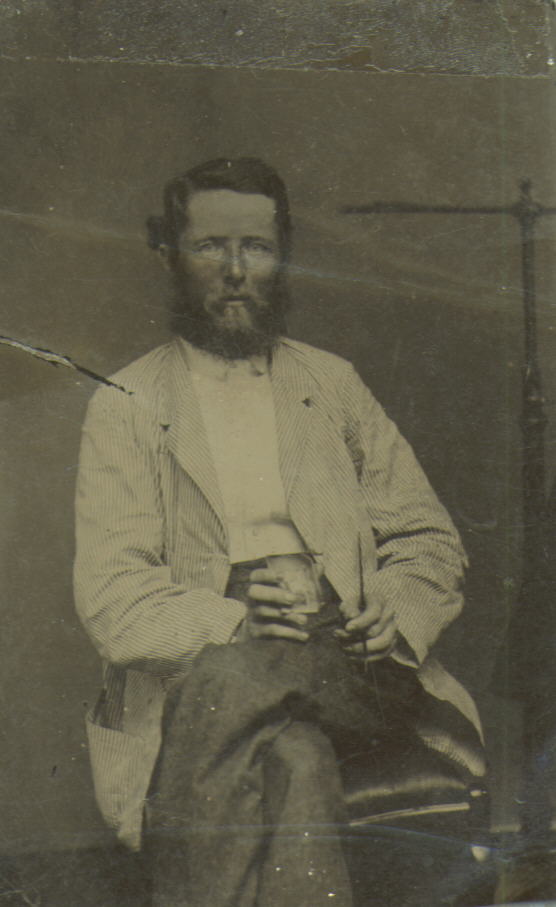Tag: alphadelphia association
-

James Noyes Sr., b. 1793
James Noyes Sr., b. 1793 Sep 13 at Worcester Co. Massachusetts, died 1864 Aug 26 at Pavillion, Kalamazoo, Michigan was married to Sally Marble and Susan Waters. Direct line concerning this blog is through his son James Allen Noyes. James Noyes was a member of the Alphadelphia Association commune. He is observed here holding a…
-

Roswell Ransom at Alphadelphia
Roswell Ransom was a stockholder in the Alphadelphia Association. A brother of his was Dr. Farnsworth Fletcher Ransom, whose wife was Elizabeth Noyes, a sister of John Humphrey Noyes who founded the The Oneida Community. My James Noyes and John Humphrey Noyes were only 4th cousins, but I still have found it interesting that Elizabeth’s…
-

James Noyes and Sally Marble
James Noyes, born Sep 13, 1793 at Worcester County, Massachusetts, died Aug 26 1864 at Pavilion, Kalamazoo, Michigan. On Sep 6, 1815 he married first, at Pavilion, Kalamazoo, Michigan, Sally Marble. She was born Sep 6 1796 in Massachusetts and died at the age of 41 on Aug 10 1838 at Pavilion, Kalamazoo, Michigan. James…
-

Samuel Durant on THE PRIMITIVE EXPOUNDER, 1880
HISTORY OF INGHAM AND EATON COUNTIES MICHIGAN WITH ILLUSTRATIONS AND BIOGRAPHICAL SKETCHES OF THEIR PROMINENT MEN AND PIONEERS By SAMUEL DURANT Philadelphia D. W. Ensign & Co. 1880 THE PRIMITIVE EXPOUNDER. This paper was originally established at Ann Arbor, Mich., in 1844, by Billings & Thornton. It was a small quarto in form, with two…
-

The Parting of Ways of “The Primitive Expounder” and the Alphadelphia Association
“The Primitive Expounder”, a Universalist paper “Devoted to the Theoretical and Practical Religion, Expounded in its Primitive Purity, Excellence, and Loveliness”, was published out of Alphadelphia for a period of time by R. Thornton and J. Billings, then R. Thornton and J. H. Sanford, with corresponding editors, A. H. Curtis, C. P. West, W. W.…
-

“Alphadelphia Association” in the JOURNAL OF THE HOUSE OF REPRESENTATIVES OF THE STATE OF MICHIGAN, 1844
JOURNAL OF THE HOUSE OF REPRESENTATIVES OF THE STATE OF MICHIGAN 1844 * * * * * Wednesday, January 24, 1844 Pg. 107 PETITIONS By Mr. H. N. Walker, the claim of J. J. Butler, for seal furnished for the supreme court. Referred to the committee on claims. By Mr. Delamatter, of C. W. Vining…
-

Review of the “Primitive Expounder”
From Volume VIII, December 20, 1845, of “The Star in the West” PRIMITIVE EXPOUNDER The first number of a new Vol. was received to day, Dec. 13th. We have always read this paper with pleasure, for it is conducted with prudence and with an eye to enlighten as much as possible those who sit in…
-

Review of the Alphadelphia Tocsin
From Volume VIII, December 12, 1845, of “The Star in the West” ALPHADELPHIA TOCSIN The best paper we have ever seen devoted to Association or Fourierism is one of the above title, published in Alphadelphia, Michigan. It is clear, explicit and practical–and therefore a useful agent in the dissemination of the views of Association. In…
-

WHO STOLE THE BEEF
From Volume VIII, December 20, 1845, of “The Star in the West” SUMMARY JUSTICE—’WHO STOLE THE BEEF?’ The Primitive Expounder at Alphadelphia, Michigan, tells a good story about the exposure of two Methodist preachers who lately held forth at a Camp Meeting at Romulus in that State. It seems the Methodists, at their Camp Meetings…
-

May 20 1844 Letter from Schetterly to The Phalanx on the Alphadelphia Association’s Progress
NOTE: One of the more interesting things about this article, to me, is that at the time the society was given as having “upwards of” 1300 members, with at least 100 rejected. This far exceeds the typical assessment of numbers belonging to the society. Addressed here are the association’s early attempts to prepare for on…